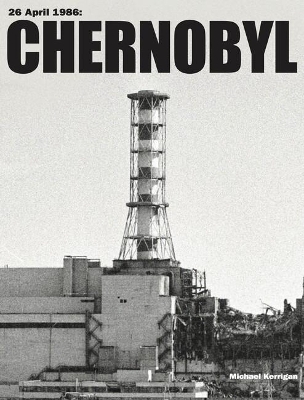
Chernobyl
Amber Books (Verlag)
978-1-83886-212-1 (ISBN)
On 26 April 1986, the unthinkable happened near the Ukrainian town of Pripyat: two massive steam explosions ruptured No. 4 Reactor at the Chernobyl Nuclear Power Plant, immediately killing 30 people and setting off the worst nuclear accident in history. The explosions were followed by an open-air reactor core fire that released huge amounts of radioactive contamination into the atmosphere for the next nine days, spreading across the Soviet Union, parts of Europe, and especially neighbouring Belarus, where around 70% of the waste landed.
The following clean-up operation involved more than half a million personnel at a cost of $68 billion, and a further 4,000 people were estimated to have died from disaster-related illnesses in the following 20 years. Some 350,000 people were evacuated as a result of the accident (including 95 villages in Belarus), and much of the area returned to the wild, with the nearby city of Pripyat now a ghost town.
Chernobyl provides a photographic exploration of the catastrophe and its aftermath in 180 authentic photos. See the twisted wreckage of No. 4 Reactor, the cause of the nuclear disaster; marvel at historic photos of the clean-up operation, with helicopters spraying decontamination liquid and liquidators manually clearing radioactive debris; see the huge cooling pond used to cool the reactors, and which today is home to abundant wildlife, despite the radiation; explore the ghost town of Pripyat, with its decaying apartment blocks, empty basketball courts, abandoned amusement park, wrecked schools, and deserted streets.
Michael Kerrigan is the author of the History of Russia, Stalin, Amazing Churches of the World, Enigma, and Cold War Plans That Never Happened, among many other books. Educated at Oxford University, he is also a feature writer and reviewer for The Scotsman and the Times Literary Supplement. He lives in Edinburgh, Scotland.
Contents:
Chapter 1: Before the Disaster
The Chernobyl Power Complex, lying about 130km (80 miles) north of Kiev, Ukraine, and about 20km (14 miles) south of the border with Belarus, consisted of four nuclear reactors. Units 1 and 2 were constructed between 1970 and 1977, while units 3 and 4 of the same design were completed in 1983. Two more reactors were planned, but in the aftermath of the disaster construction was cancelled. Within a 30km (20-mile) radius of the power plant, including the city of Pripyat and town of Chernobyl, the total population was approximately 140,000 at the time of the accident.
Chapter 2: Catastrophe at Chernobyl
A series of operator actions, including the disabling of automatic shutdown mechanisms, preceded the attempted test early on 26 April. By the time that the operator moved to shut down the reactor, the reactor was in an extremely unstable condition. The interaction of very hot fuel with the cooling water led to fuel fragmentation along with rapid steam production and an increase in pressure. The overpressure caused the 1000 t cover plate of the reactor to become partially detached, rupturing the fuel channels. Intense steam generation then spread throughout the whole core, causing a steam explosion.
The clean up operation involved first the use of robots then army reservists to physically clear the debris and clean the remaining reactors. In some areas, workers could not stay any longer than 40 seconds before the radiation they received reached the maximum authorized dose a human being should receive in his entire life.
Chapter 3: Pripyat – Urban Wasteland
First built in the 1970s, Pripyat was a thriving town of 50,000 designed to serve the needs of the nuclear power plant, with local sports facilities, an amusement park, a fire station, police station, hospitals, and five schools with places for more than 6000 students. Today, the town stands deserted, with many of the public buildings, apartment blocks and businesses decaying and returned to nature.
In 1986, the city of Slavutych was constructed to replace Pripyat, just 60km (40 miles) to the east, and provides homes for more than 20,000 people.
Chapter 4: Belarus Counts the Cost
The Polesie Reserve, established in 1988, now covers an area of more than 800 square miles and is divided into three regions: Brahin, Khoiniki, and Naroulia. Before the disaster, this largely agrarian region was home to more than 22,000 people spread across 95 villages, including numerous settlements of Old Believers, a schismatic Orthodox Christian sect. Now it’s home to moose, deer, lynx, and bison, as well as 48 of Belarus’s 189 species of endangered plants.
Chapter 5: Chernobyl Today
Reactor No. 4 was enclosed in a large concrete shelter, which was erected quickly (by October 1986) to allow continuing operation of the other reactors at the plant. The New Safe Confinement (NSC) structure was completed in 2017, having been built adjacent and then moved into place on rails. It is an arch 110 metres high, 165 metres long and spanning 260 metres, covering both unit 4 and the hastily-built 1986 structure.
The cooling pond at the Chernobyl Nuclear Power Plant (Pripyat, Ukraine) has abundant wildlife, despite the radiation present in the area. There are some accounts of wels catfish (Silurus glanis) growing up to 350 pounds and having a lifespan of up to 50 years.
Index
| Erscheinungsdatum | 01.06.2022 |
|---|---|
| Reihe/Serie | History in Photographs |
| Zusatzinfo | Halftones, color; Halftones, black and white |
| Sprache | englisch |
| Maße | 192 x 250 mm |
| Gewicht | 915 g |
| Themenwelt | Geisteswissenschaften ► Geschichte ► Regional- / Ländergeschichte |
| Sozialwissenschaften | |
| Technik ► Elektrotechnik / Energietechnik | |
| ISBN-10 | 1-83886-212-9 / 1838862129 |
| ISBN-13 | 978-1-83886-212-1 / 9781838862121 |
| Zustand | Neuware |
| Haben Sie eine Frage zum Produkt? |
aus dem Bereich


